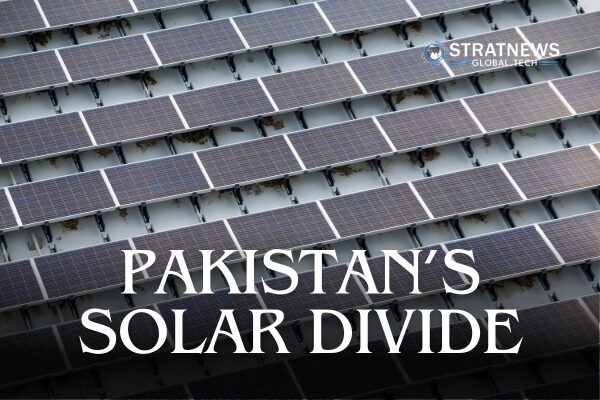Rising Solar Costs Push Middle Class to the Brink
In the sweltering heat of Karachi, Fahim Ali wipes dust from the solar panels on his rooftop. The 31-year-old industrial engineer chose to go off-grid in August last year, driven by steep electricity prices and frequent blackouts. His decision came as Pakistan increased power and gas tariffs under an agreement with the International Monetary Fund (IMF) to support a struggling energy sector.
Ali spent around 1 million rupees ($3,559) on his off-grid system, which includes batteries and a water motor. Though costly, he believes it is better than paying monthly electricity bills of 25,000 to 30,000 rupees ($89–$107).
“I went off-grid for several reasons. One major factor was load shedding. On-grid systems don’t work during outages, so I wouldn’t benefit from the sunlight,” Ali explained.
Solar Uptake Grows, But Not for All
Pakistan’s solar power contribution grew to over 14% of the national supply in 2023, up from 4% in 2021, according to U.K.-based think tank Ember. This puts Pakistan ahead of China, the global leader in solar manufacturing. Yet the solar boom has left behind much of Pakistan’s urban middle class, who cannot afford the switch.
Most home solar systems are not connected to the grid, meaning excess electricity cannot be shared. As wealthier households exit the grid, power companies lose high-paying customers. This has forced providers to raise prices for those still dependent on traditional electricity sources, widening the gap between rich and poor.
Low-Income Families Bear the Burden
Just a few miles from Ali’s home, 65-year-old Muhammad Sadiq lives in a small two-room apartment with six family members. With no rooftop and no means to afford a solar setup, Sadiq struggles with rising bills. His monthly pension barely covers the 10,000 to 15,000 rupees ($36–$54) electricity cost.
“We are being crushed by electricity bills. Half our income goes to paying them. We have to choose between buying food and paying for power,” Sadiq said.
The struggle is widespread. Only 1% of paying customers used over 400 electricity units in 2024, down from 10% pre-pandemic, according to Karachi-based consultancy Renewables First.
Systemic Barriers Prevent Broader Solar Access
A lack of infrastructure further limits the benefits of solar. Most systems do not transmit power back to the grid due to high costs and approval delays. The required inverters cost between $1,400 and $1,800—about half of an average household’s annual income.
Even industrial firms like Interloop in Punjab, which installed solar panels across its cattle sheds, have benefited financially. The company sees returns in three to four years by cutting electricity costs. However, this saving translates to losses for national power providers, who still face high fixed costs from fuel contracts and infrastructure upgrades.
As wealthier and industrial consumers reduce their reliance on grid electricity, remaining users bear the brunt of rising prices. These costs have already increased under the IMF deal and may continue to climb.
Energy Minister Awais Leghari acknowledged the gap in an interview with Reuters but stated that tariffs have fallen since June 2024, when the IMF approved reductions. The IMF did not respond to requests for comment.
“Pakistan shows one key lesson,” said Ahtasam Ahmad from Renewables First. “If governments don’t adapt quickly, the people will take control themselves.”
with inputs from Reuters


